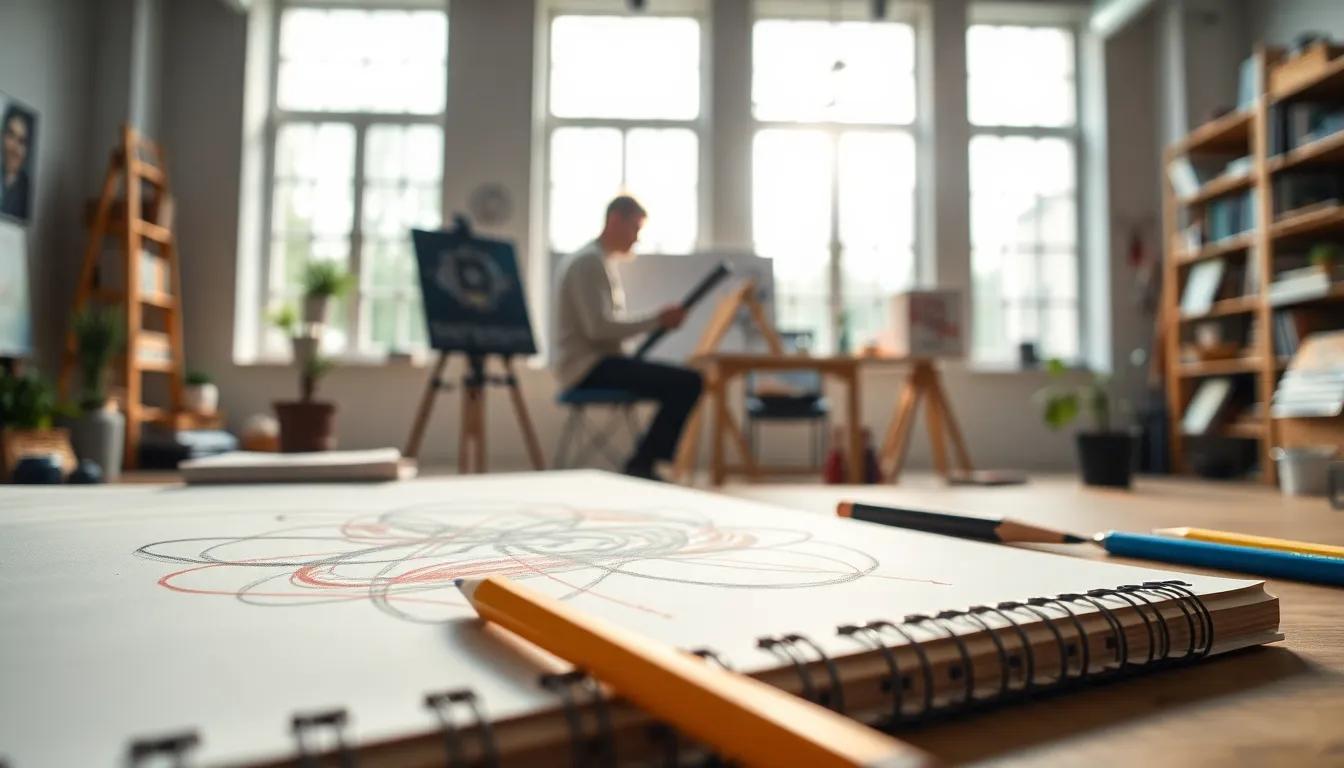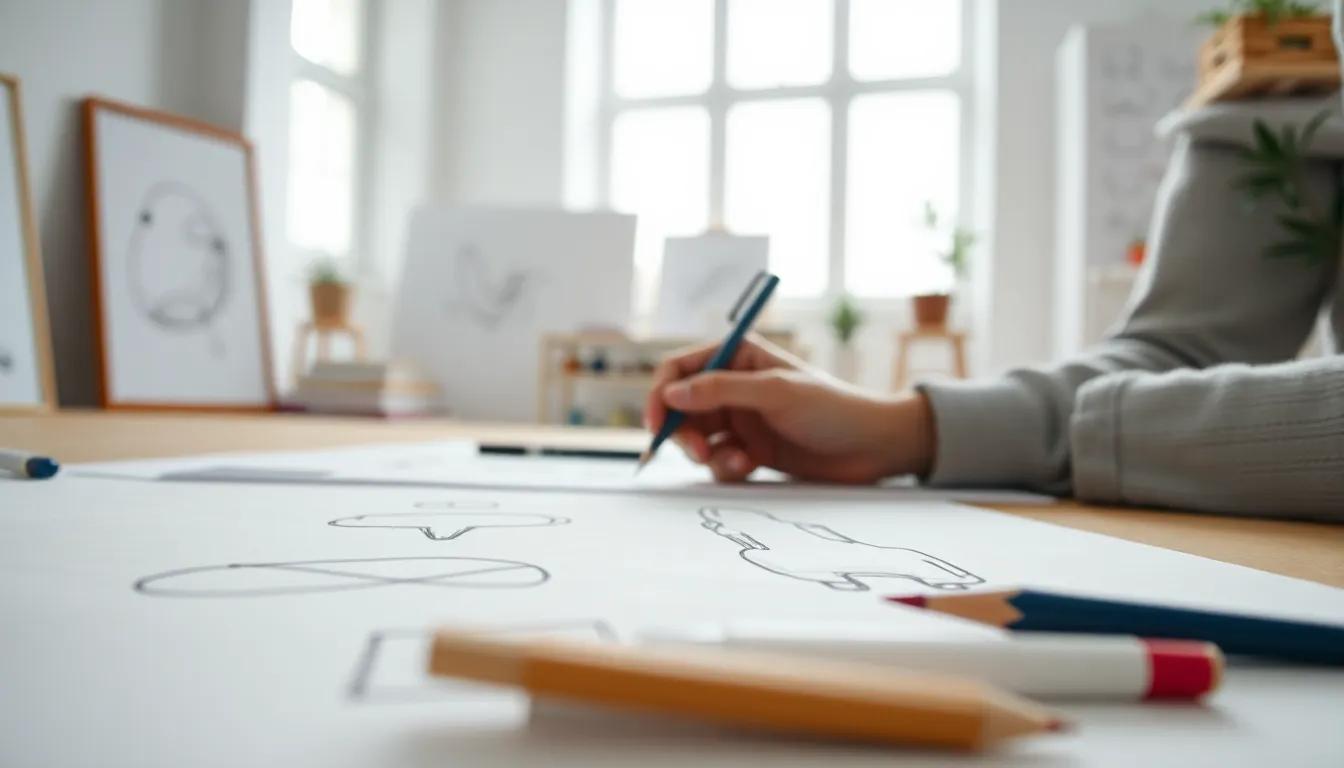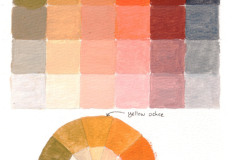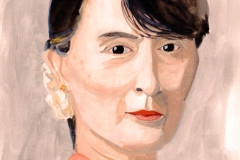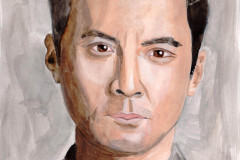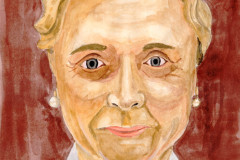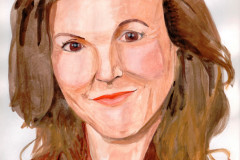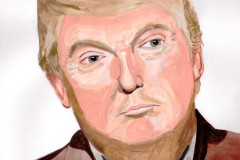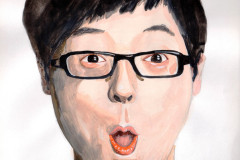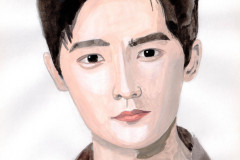Introduction
Doodling is often viewed as a casual activity, but it holds potential for inspiring creative drawing ideas. Easy doodles can serve as a foundation for more complex artwork, motivating artists of all levels to expand their skills and implement designs that reflect their individuality. Whether it’s a simple swirl or a character design, these effortless sketches foster creativity, giving rise to distinct artistic expression. One can explore an array of materials and techniques to enhance these basic forms into stunning masterpieces.
Many artists find that their most innovative ideas emerge from free drawing, where pressure is relieved and imagination flows freely. By integrating basic drawing methods into routines, both seasoned artists and beginners can uncover unique projects that stem from easy doodles. In this article, we will journey through the evolution of doodles into thoughtful drawings, exploring various themes and techniques that inspire uniquely captivating art.
The Art of Doodling History and Significance in Creative Expression
Doodling Through the Ages
Doodling, often perceived as mere scribbles, has a rich history that reveals its significance as a form of artistic expression. Tracing back to ancient civilizations, early forms of doodling can be found in cave paintings and hieroglyphics, where the act of marking surfaces with simple pictures or symbols served as a communication tool. Over time, doodling evolved, becoming a spontaneous activity that engaged the minds of people from all walks of life. It was not limited to artists, as even students in classrooms found solace in drawing while listening to lectures.
The Role of Doodling in Enhancing Creativity
Doodling plays a pivotal role in stimulating creativity. Psychological studies have shown that engaging in this seemingly mindless activity can facilitate deeper thinking and enhance memory retention. When individuals doodle, they allow their minds to wander freely, which can lead to unexpected ideas and innovative concepts. Far from being distractions, these simple drawings can serve as catalysts for creativity, fostering an environment where artists can draw connections between disparate thoughts. For many artists, doodles serve as a reservoir of inspiration, where sketches emerge from the subconscious and later morph into fully realized works.
The act of doodling provides a comfortable space for experimentation. Unlike formal drawing, which may invoke apprehension about skill and technique, doodling encourages a playful approach to creation. This relaxed atmosphere can lead to the evolution of unique artistic styles, as individuals explore different forms, shapes, and themes. Doodling enables artists to develop their voice and style without the constraints of traditional art forms, making it an invaluable process in a creative journey.
Doodling’s importance cannot be overstated. It holds a dual purpose: as a historical glimpse into the artistic impulse that exists within everyone, and as a modern tool for fostering creativity in both seasoned artists and novices alike. The significance of doodling as an art form lies not only in its legacy but also in its ability to inspire and transform simple thoughts into unique art expressions.
From Doodles to Drawings Techniques for Transforming Simple Doodles into Structured Art
Transforming simple doodles into more structured drawings is a gratifying process that allows artists to explore their creativity and express ideas in unique ways. This evolution begins with the doodle itself, a spontaneous and often uninhibited expression of thought that serves as a foundation for more intricate compositions. Here, we will outline techniques and strategies to facilitate this transformation.
Recognizing Potential
The first step in evolving doodles into cohesive drawings is recognizing their potential. Look at your doodles not just as random sketches, but as the beginning of something more developed. Identify elements that stand out to you—these could be shapes, characters, or abstract patterns that evoke a particular emotion or concept. By honing in on specific components, you can start to visualize how they may form the basis of a larger piece.
Refining Shapes and Forms
Once you’ve pinpointed the elements you wish to develop, the next step involves refining the shapes and forms. Use clean lines to trace over the original doodle, enhancing its structure while maintaining the essence of spontaneity. You might employ techniques such as:
- Contour Drawing: By focusing on solid outlines, you can add depth and distinction to your shapes.
- Adding Details: Introduce textures, patterns, or shading to give life and dimension to your drawing.
- Repetition: Repeating motifs or elements can create rhythm within your art, transforming individual doodles into a cohesive theme.
These refinements can take your Initial doodles from simplicity to sophistication while still respecting their original charm.
Incorporating Backgrounds and Context
An essential part of this evolution is considering the context of your drawing. Incorporate backgrounds or settings that complement your central elements. Creating an environment can provide depth and narrative to your artwork. Think about where your doodle characters or shapes might exist: are they in a vibrant landscape, an abstract space, or amongst everyday objects? This imaginative inclusion enhances the viewer’s experience and offers stories waiting to be told.
Through these techniques—recognizing potential, refining forms, and adding context—doodles can seamlessly transition into inspiring drawings that capture imaginations. This journey not only showcases artistic evolution but also deepens your appreciation for the creative spontaneity that doodling offers, leading you closer to finding inspiration in everyday life.
Finding Inspiration in Everyday Life Transforming Observations into Doodles
Creative expression often lies just beneath the surface of our daily lives, waiting to be unearthed through simple observation. Each moment, whether it is mundane or extraordinary, is filled with potential artistic inspiration. By tuning into our surroundings, we can take ordinary elements and turn them into imaginative doodles that speak to our unique perspectives.
Start by considering your environment. Everyday objects, such as a coffee cup, a potted plant, or even the patterns on your clothing can serve as excellent subjects for doodles. Notice the shapes, lines, and textures they present. For example, the curvy form of a tea kettle can be transformed into a flowing abstract doodle, while the polka dots on your socks might inspire a delightful series of whimsical circles. Challenge yourself to see these objects not just as they are, but as they might become through your artistic lens.
Another rich source of inspiration is the people around you. Observe their expressions, gestures, and interactions. A friend’s laugh may become a doodle of vibrant swirling lines, while a moment of contemplation could translate into a simple sketch of a figure lost in thought. By capturing these fleeting moments, you bring life to your doodles, making them reflections of real experiences.
Nature also offers an abundance of artistic cues. A stroll through the park can reveal intricate leaf patterns, the flight of birds, or even the way light filters through tree branches. Each observation can become a basis for a doodle, inviting you to experiment with various forms, lines, and colors. For instance, a fallen twig might inspire an abstract doodle that mimics its twisting shape or the bark’s texture, capturing the essence of nature’s beauty.
Consider keeping a small sketchbook handy, encouraging spontaneous doodling whenever inspiration strikes. Jot down quick sketches or notes on what you observe throughout your day. This practice not only cultivates your ability to see but also serves as a valuable reference when you’re looking to transform simple doodles into more intricate drawings. By exploring the ordinary with a fresh perspective, you empower yourself to create extraordinary expressions of art.
The key to drawing inspiration from everyday life lies in your willingness to observe and transform those observations into creative doodles. Every encounter, every object, and every moment can fuel your artistic journey—turning the mundane into remarkable expressions of individuality.
Utilizing Various Mediums Easy Doodles for Unique Art Expressions
Doodle Materials That Inspire
In the world of doodling, the tools and materials one chooses can dramatically influence the final artwork’s aesthetic and emotional impact. Artists often start with simple doodles that may seem mundane, but the magic happens when different mediums are introduced. Each medium brings its characteristics, allowing doodles to transform into captivating pieces of art. From traditional pen and paper to sophisticated digital mediums, the choice of materials can enhance creativity and expression.
Consider starting with everyday items such as gel pens, colored pencils, or even highlighters. Each tool can impart a unique texture and vibrancy to your doodles. Gel pens often provide vivid colors and smooth lines, making them ideal for intricate designs, while colored pencils allow for shading and depth, lending a soft feel to a drawing. Using markers, on the other hand, gives doodles a bold and graphic quality that can be very striking. By switching between these materials, an artist can achieve range and dimension in their artwork.
Experimenting with various papers can offer additional textures to the doodling experience. Watercolor paper absorbs medium beautifully, enabling artists to blend colors seamlessly. Alternatively, using craft paper or cardstock can bring a sturdier feel, ideal for mixed media applications where layering is involved. Through trial and error, doodlers can uncover the perfect combination of medium and material for their unique artistic voice.
Digital Doodling and Beyond
Digital media also deserves a mention, particularly with the rise of tablets and styluses. Digital tools allow for an infinite array of possibilities—from manipulation of colors to the ability to undo mistakes easily. Programs like Procreate and Adobe Fresco offer brush options that mimic traditional mediums while also introducing new textures and effects, propelling doodles into a realm of innovation. The convenience and flexibility of digital doodling can inspire artists to push their creativity further than they ever imagined.
The choice between a simple sketchbook and state-of-the-art software opens doors to new creative pathways, making doodling a limitless form of artistic expression. By connecting with these tools, artists can expand their doodles into vibrant narratives, resonating with more profound meanings while also reflecting their personal journeys. This seamless transition from easy doodles to unique art expressions embodies the transformative power of creative exploration.
Incorporating Themes into Doodles Making Them Impactful and Meaningful
Expanding Your Doodle Vocabulary
Doodling is often perceived as a mindless activity, a way to keep hands busy during a meeting or while chatting on the phone. However, introducing themes into your doodles can transform these simple sketches into profound expressions of personal thoughts, emotions, or ideologies. By focusing on a specific theme—be it nature, emotions, spirituality, or even social issues—artists can provoke thought and connect directly with the viewer’s feelings and experiences.
Choosing a theme can guide the visual elements of your doodles. For instance, if you opt for a nature theme, you can incorporate elements like trees, flowers, or animals. Delving deeper, you might focus on endangered species to highlight environmental issues. Each doodle can serve as a small dialogue about larger themes, thus giving meaning to the seemingly simple shapes and lines.
Techniques for Thematic Doodling
One effective technique is to create a visual narrative within your doodles. This might involve illustrating a day in the life of an animal or depicting an emotional journey through abstract shapes and colors. Consider developing a series of doodles that explore a single theme from various angles, allowing for greater depth and storytelling potential. This approach not only captivates the viewer’s attention but also allows you to explore your creative boundaries.
Incorporating different motifs associated with your central theme can also elevate the significance of your doodles. For instance, doodling a series of sun and moon representations can symbolize the passage of time or the duality of life. Using metaphorical imagery can add layers of meaning—an owl may symbolize wisdom, while a butterfly often represents transformation and change. Simply transitioning genres or subjects can lead to unexpected connections and insights.
Don’t hesitate to play with colors as you weave themes into your doodles. Colors can evoke specific emotions, and choosing a color palette aligned with your theme can amplify the message you wish to convey. Warm tones might express energy and enthusiasm, while cooler shades could evoke calmness or solitude. Ultimately, the fusion of themes, symbolic imagery, and color choices in doodling offers an array of possibilities to create impactful art.
Sharing and Collaborating on Doodle Art The Role of Community in Creative Growth
Fostering Connection through Simple Expressions
Engaging in doodling often serves as a solitary pursuit, with individuals immersing themselves in their personal artistic realms. However, sharing these uncomplicated creations can profoundly transform not only the artist’s journey but also the community at large. By showcasing doodles, artists invite feedback, encouragement, and collaboration, fostering a sense of connection that inspires growth and innovation. When simple doodles are shared within a community, they become part of a larger narrative, breathing life into each sketch and linking the ideas and feelings of different artists.
Communities centered around doodling provide a nurturing environment where creativity flourishes. Whether through social media platforms, local art groups, or online forums, artists exhibit their work and, in return, receive invaluable insights from fellow doodlers. This exchange acts like a catalyst, accelerating the exploration of various styles, techniques, and themes. One artist’s whimsical spiral might inspire another to create intricate mandalas, while someone’s playfully drawn characters could spark a collective story. These communal interactions emphasize that doodling is more than a solitary endeavor; it’s an evolving dialogue among artists.
Transformative Feedback and Inspiration
Feedback is a powerful tool within any artistic community, and doodling is no exception. Constructive comments can provide a new perspective, revealing elements within a doodle that the creator may not have initially recognized. For example, a doodler might share a simple landscape drawing, and another might suggest innovative color techniques or new perspectives that enhance the artwork’s emotional impact. Such discussions can stimulate individual creativity and push artists to experiment beyond their comfort zones.
The inspiration drawn from others often leads to unique art expressions that merge various doodling styles or themes. An artist exposed to diverse perspectives may integrate these influences into their own work, giving rise to something original and exciting. This collaborative spirit encourages artists to reimagine their doodles, fostering an environment where creativity can continuously evolve.
Sharing doodles is not merely about showcasing work; it’s about building relationships, engaging in dialogues, and nurturing a community of artists. The simplicity of doodling becomes a powerful medium for collective growth, allowing each artist to flourish in a tapestry of shared inspiration and creativity.
Conclusions
The exploration of easy doodles and their transformation into drawing ideas showcases the infinite possibilities within the realm of art. Engaging with these fundamental sketches allows artists to break free from constraints and discover their creative voice. The simplicity of doodling encourages experimentation, helping to build confidence and skill that can lead to more intricate artwork.
As we have discussed, embracing the casual nature of doodling can lead to unexpected and fulfilling artistic journeys. By harnessing inspiration from these uncomplicated drawings, artists can cultivate their personal styles while enjoying the process of creation. Thus, the next time you find yourself doodling, remember that these simple marks can pave the way to extraordinary artistic expression.



